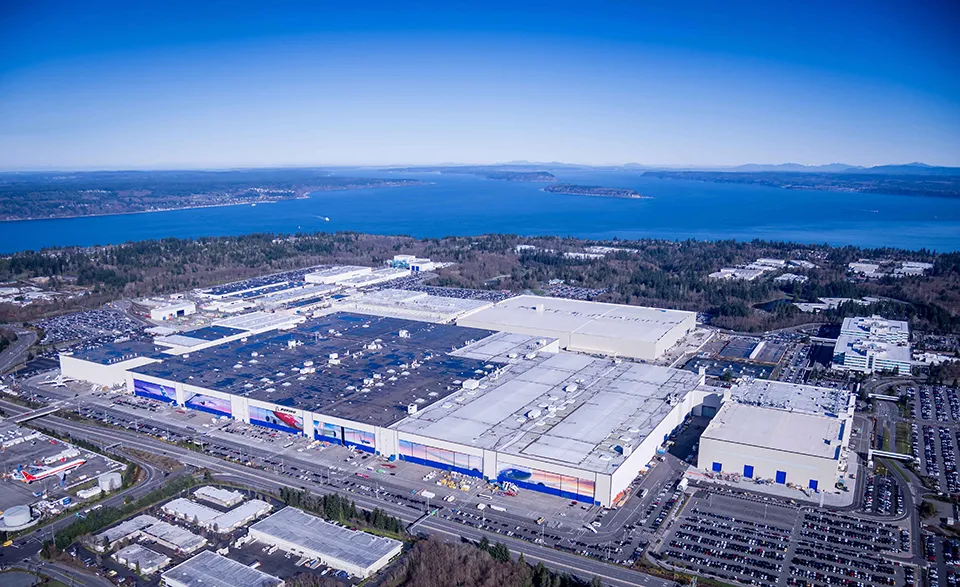
Boeing forecasts 19,000 jets required over 10 years
Oct 11, 2021

Boeing has projected a significant demand for new aircraft over the next decade, estimating the need for approximately 19,000 jets. This forecast reflects a growing global aviation market driven by increasing passenger traffic and the expansion of low-cost carriers. The demand is expected to be particularly strong in regions such as Asia-Pacific, where rising middle-class populations are contributing to surging air travel. Boeing's outlook emphasizes the importance of modernizing fleets with more fuel-efficient models, as airlines seek to enhance sustainability and reduce operational costs amid evolving environmental regulations and customer preferences.
Boeing has made a significant announcement regarding the future of the aviation industry, forecasting a need for "19,000 jets" over the next decade. This projection is a response to the increasing demand for air travel globally, driven by factors such as economic growth, rising disposable income, and an expanding middle class in emerging markets. The forecast highlights the essential role of commercial aviation in connecting people and goods across the world.
Breaking Down Boeing's Jet Demand Forecast
Boeing's forecast is based on extensive analysis of market trends and economic indicators. The company anticipates that the demand for new aircraft will primarily stem from the need to replace aging fleets and to meet the needs of expanding airlines. The breakdown of the forecast is as follows:
| Aircraft Type | Forecasted Deliveries |
|---|---|
| Narrow-body jets | 12,000 |
| Wide-body jets | 4,000 |
| Freighter aircraft | 3,000 |
This table illustrates the different categories of aircraft that are expected to see the highest demand. Notably, "narrow-body jets" are projected to account for a significant portion of the total demand, reflecting the growing trend of low-cost carriers and regional airlines expanding their fleets.
Factors Driving the Demand for New Jets
Several key factors are influencing Boeing's "jet demand forecast". These include:
- Economic Growth: As economies recover from the impacts of global events, the demand for air travel is expected to increase, particularly in regions like Asia-Pacific and Africa, where air travel is becoming more accessible.
- Replacement of Aging Fleets: Many airlines are operating older aircraft that are less fuel-efficient. The shift towards more modern, eco-friendly jets is a crucial driver in the demand for new aircraft.
- Technological Advancements: Innovations in aircraft design and technology have led to more efficient and environmentally friendly jets, making new aircraft more appealing to airlines looking to reduce operational costs and carbon emissions.
The Role of Sustainability in Aircraft Demand
As the aviation industry faces increasing pressure to reduce its carbon footprint, sustainability has become a crucial factor in aircraft purchases. Boeing's forecast reflects a growing emphasis on eco-friendly technologies. Newer models are designed with materials and systems that lower emissions and fuel consumption. This shift is encouraging airlines to invest in "sustainable aviation" practices, which includes the acquisition of modern jets equipped with advanced technologies.
Global Market Trends Impacting Boeing's Forecast
The global aviation market is also influenced by various trends that play a significant role in Boeing’s projections. Some of these trends include:
- Increased Air Travel Demand: The International Air Transport Association (IATA) projects that global air passenger numbers could reach pre-pandemic levels, further supporting Boeing's forecast.
- Emerging Markets: Countries in Asia and Africa are experiencing rapid urbanization and population growth, leading to higher demand for air travel.
- Low-Cost Carriers: The rise of low-cost airlines is reshaping the market landscape, as they often prefer "narrow-body jets" for their operational efficiency and cost-effectiveness.
Implications for Airlines and Manufacturers
Boeing's forecast of "19,000 jets" required over the next decade not only provides insights for the aircraft manufacturer but also signals to airlines the importance of planning their fleet strategies. Airlines must consider factors such as financing options, operational efficiency, and environmental impact when making decisions about aircraft purchases. Additionally, this forecast offers opportunities for competing manufacturers to strategize and position themselves in the global market.
Conclusion: A Bright Future for Aviation
Boeing's projection of 19,000 jets needed over the next ten years underscores the resilience of the aviation industry and its capacity for growth. As airlines adapt to changing market dynamics and invest in more efficient and sustainable fleets, the demand for new jets will likely remain robust. This trend not only bodes well for aircraft manufacturers like Boeing but also sets the stage for an innovative and environmentally conscious future in aviation.
Related Articles

Explore Thailand: The Best Islands to Visit for Paradise, Adventure, and Relaxation

The Ultimate Guide to the Best Islands in Thailand for Your Next Getaway

Do babies need passports? How to get a passport for a newborn

How to get a U.S. passport fast: here’s how to expedite the process

What is Mobile Passport Control: 5 reasons why you should use it

SENTRI vs. Global Entry: A detailed guide

Do you need a passport to go to the Bahamas? Let’s find out

Do you need a passport to go to Mexico? A detailed guide

Do you need a passport to go to Canada? We got the answer

Do You Need a Passport for a Cruise: An Essential Travel Guide

Booster Seat Requirements: All the Rules to Follow in Your Rental Car

What Are the World’s Most Powerful Passports, and How Does Yours Rank?

How to Take a Passport Photo at Home: A Helpful Guide

You've got to have heart! Southwest's new livery

Your opinion: Should water be free on low cost carriers?

Young women bolder than guys as solo travellers
